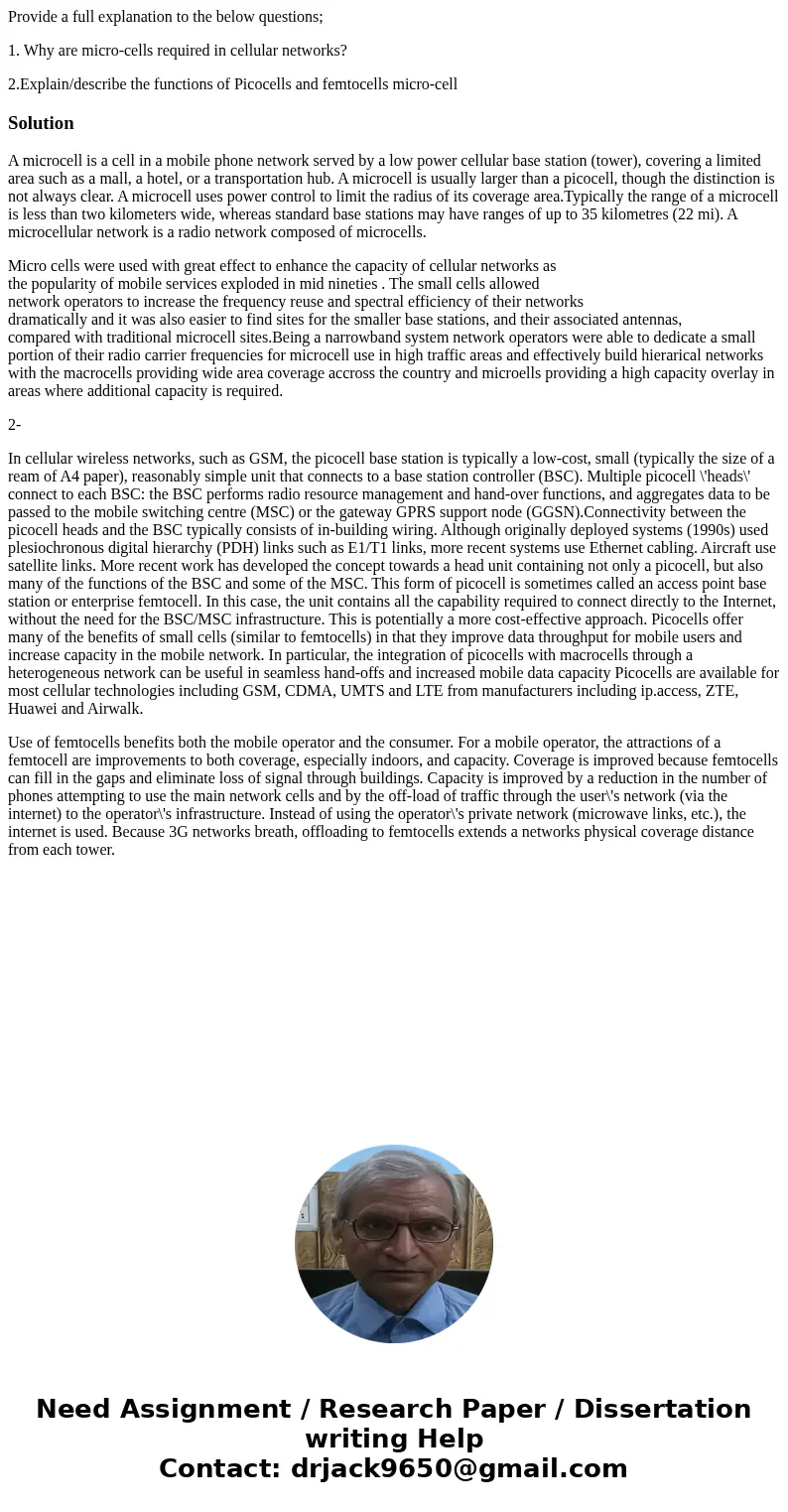Provide a full explanation to the below questions 1 Why are
Provide a full explanation to the below questions;
1. Why are micro-cells required in cellular networks?
2.Explain/describe the functions of Picocells and femtocells micro-cell
Solution
A microcell is a cell in a mobile phone network served by a low power cellular base station (tower), covering a limited area such as a mall, a hotel, or a transportation hub. A microcell is usually larger than a picocell, though the distinction is not always clear. A microcell uses power control to limit the radius of its coverage area.Typically the range of a microcell is less than two kilometers wide, whereas standard base stations may have ranges of up to 35 kilometres (22 mi). A microcellular network is a radio network composed of microcells.
Micro cells were used with great effect to enhance the capacity of cellular networks as
the popularity of mobile services exploded in mid nineties . The small cells allowed
network operators to increase the frequency reuse and spectral efficiency of their networks
dramatically and it was also easier to find sites for the smaller base stations, and their associated antennas,
compared with traditional microcell sites.Being a narrowband system network operators were able to dedicate a small portion of their radio carrier frequencies for microcell use in high traffic areas and effectively build hierarical networks with the macrocells providing wide area coverage accross the country and microells providing a high capacity overlay in areas where additional capacity is required.
2-
In cellular wireless networks, such as GSM, the picocell base station is typically a low-cost, small (typically the size of a ream of A4 paper), reasonably simple unit that connects to a base station controller (BSC). Multiple picocell \'heads\' connect to each BSC: the BSC performs radio resource management and hand-over functions, and aggregates data to be passed to the mobile switching centre (MSC) or the gateway GPRS support node (GGSN).Connectivity between the picocell heads and the BSC typically consists of in-building wiring. Although originally deployed systems (1990s) used plesiochronous digital hierarchy (PDH) links such as E1/T1 links, more recent systems use Ethernet cabling. Aircraft use satellite links. More recent work has developed the concept towards a head unit containing not only a picocell, but also many of the functions of the BSC and some of the MSC. This form of picocell is sometimes called an access point base station or enterprise femtocell. In this case, the unit contains all the capability required to connect directly to the Internet, without the need for the BSC/MSC infrastructure. This is potentially a more cost-effective approach. Picocells offer many of the benefits of small cells (similar to femtocells) in that they improve data throughput for mobile users and increase capacity in the mobile network. In particular, the integration of picocells with macrocells through a heterogeneous network can be useful in seamless hand-offs and increased mobile data capacity Picocells are available for most cellular technologies including GSM, CDMA, UMTS and LTE from manufacturers including ip.access, ZTE, Huawei and Airwalk.
Use of femtocells benefits both the mobile operator and the consumer. For a mobile operator, the attractions of a femtocell are improvements to both coverage, especially indoors, and capacity. Coverage is improved because femtocells can fill in the gaps and eliminate loss of signal through buildings. Capacity is improved by a reduction in the number of phones attempting to use the main network cells and by the off-load of traffic through the user\'s network (via the internet) to the operator\'s infrastructure. Instead of using the operator\'s private network (microwave links, etc.), the internet is used. Because 3G networks breath, offloading to femtocells extends a networks physical coverage distance from each tower.

 Homework Sourse
Homework Sourse